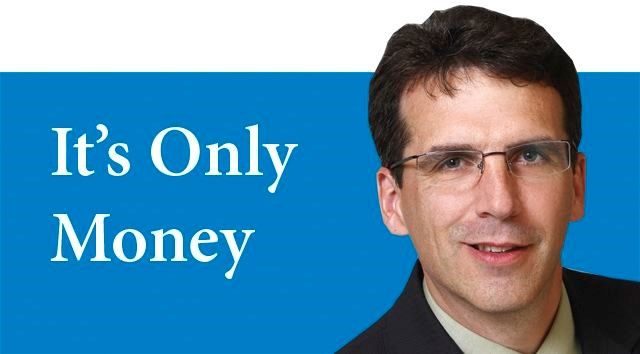The two languages of money are English and Math. Okay, three. Chinese.
I was generally one of the smart kids in high school math, but university calculus was something else. The math lab got me through it, or more accurately, the foreign geniuses who staffed the math lab ferried me past anxious and let me off near the shore.
They were all graduate students, brilliant without exception. Most were from either India or China, or one of their nearby satellites.
Although I had grown up with a good number of foreign students since grade school, most of those had been immersed in our language and culture since early childhood - Canadians in every respect. But in the university setting the foreign students were all new to Canada. And since their English was far better than my Chinese or Indian the trick for me was to find one with the thinnest accent and hope for the best.
She was nothing like the well-dressed, wealthy students from Hong Kong, Taiwan or South Korea. Everything about her spelled Mainland China. Pre-economic-miracle China. Just-beginning-to-brush-off-the-oppressive-shackles-of-communism China. I do not recall ever seeing her smile.
Her hair was not recently washed, her attire was extremely modest, and her demeanour dour, serious, strictly bookish. I was deeply fascinated, hoping to engage with a real life Maoist, but she seemed suspicious of me, as if someone would report her if she was found fraternizing with a capitalist.
This was just after the Tiananmen Square massacre, where Chinese students were literally crushed by their masters. Rumours abounded that watchful party members roamed the SFU campus, keeping a Big Brotherly eye on things.
I saw their hand-written notes in the margins of the South China Morning Post in the school library that same week, chillingly celebrating the tanks and the death of student protesters in Beijing.
Camaraderie with this comrade was not going to be a thing. Her English was in there somewhere. My Chinese was limited to basic greetings and food orders. But through her broken English she spoke fluent calculus, as if born in a crate full of calculators.
She responded to my abacus angst with casual precision, not snotily at all. Almost warmly, but never, ever with charm. And that was it.
My brush with the bamboo curtain was, and is still, mostly in my head. But, ah the universality of university.
The prestige of Canadian education
Canada has consistently performed well in world university rankings, with three schools placing in the top 50 for consecutive years. But greater recognition for the quality of education has come from other measures including the OECD's Program for International Student Assessment.
Canada ranked seventh globally for education performance in 2015, up from 13th in 2012 and ranking above Australia (14th), the U.K. (15th) and the U.S. (25th).
Canadian schools promoting abroad
Canadian post-secondary institutions have also ramped up their recruiting efforts abroad. There were close to 17,500 international students studying at the University of Toronto in 2016-17, a 10 per cent increase from the year prior and more than double the 7,400 students in 2007.
Close to 60 per cent of these students came from China in 2016, followed by India and the U.S.
Nearly 30 per cent of the student population at McGill was from abroad in 2016-17 compared to 20 per cent only five years ago. An influx of students from China and France largely contributed to the upswing.
Immigration policy and the Trump Bump
Some Canadian universities have moved to capitalize on the shifting sentiment in the U.S., for instance waiving application fees for potential students coming from countries that were subject to the immigration ban imposed in the U.S. earlier this year.
According to Inside Higher Ed, several schools are reporting that they have seen a surge in applications for the upcoming school year which is being attributed anecdotally to a Trump effect.
It is too early to gauge the overall impact that these changes could have collectively, although they are likely to provide a further boost to Canada as a destination of choice for foreign students.
Why the time is now
The number of post-secondary students studying internationally is projected to grow to 6.4 million by 2025 from 3.7 million a decade ago as per Canada's International Education Strategy, 2013.
As advanced economies increasingly compete for top talent, marketing Canada as a source of affordable, high-quality education in a tolerant setting underpins the government's push to promote our system abroad.
The mix of cultures, backgrounds and perspectives provided by international students contributes to the diverse landscape of Canada. It also provides significant economic benefits.
A foreign post-secondary student spends an average of $31,700 on tuition, books, accommodation, meals, transportation and discretionary spending each year.
Under the government's strategy to double the international student population, it anticipates expenditures could rise to above $16 billion by 2025, providing a lift to overall economic activity.
Canada is showing success in attracting foreign talent. But over the longer term, the key will be its ability to retain talent, international and domestic.
Tapping into the talent, and the consumers, produced by our institutions will be an important part of securing Canada's current and future prosperity.
Mark Ryan is an investment advisor with RBC Dominion Securities Inc. (Member - Canadian Investor Protection Fund). This article is for information purposes only. Please consult with a professional advisor before taking any action based on information in this article. Mark can be reached at mark.ryan@rbc.com.



